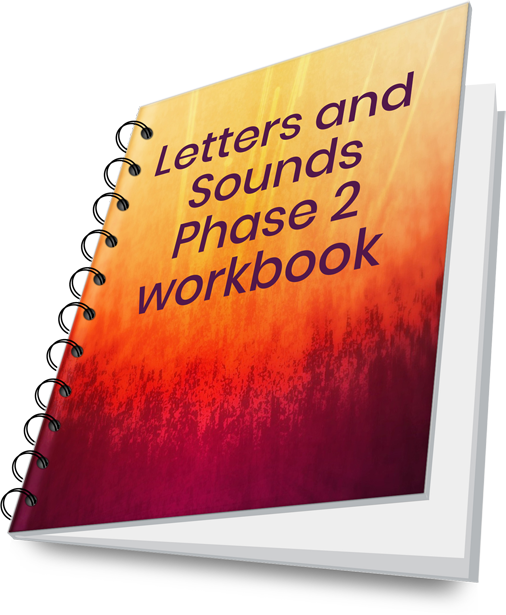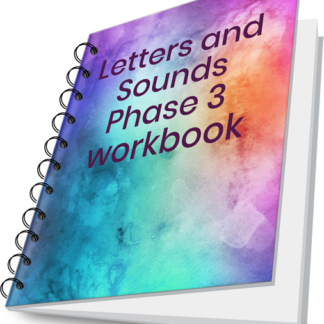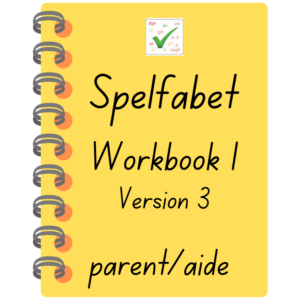Free early phonemic awareness, phonics and handwriting workbook
$AUD0.00
This free, colour workbook is designed to help you teach young Australian children (ages ~4-6) key early reading and writing skills:
- Phonemic awareness: the ability to pull spoken words apart into sounds, blend sounds together into words and manipulate sounds in words.
- Orthographic knowledge (phonics): the ability to recognise and write the lower case letters a, p, s, t, i, n, m, d, g, o, c, k, e, u, r, h, b, f and l and the word-final spellings ck, ff, ll and ss, and link them to the relevant speech sounds.
- Handwriting: where to start each letter, how to form it correctly, where to place it on the line.
The workbook follows the UK Letters and Sounds Phase 2 teaching sequence, for which many teaching resources are available (just google “letters and sounds phonics phase 2”) including this free book.
The last page of the workbook is a moveable alphabet containing just the letters/spellings taught in the book for you to laminate, cut up, and build word sequences with (e.g. make “pat”, change it into “sat”, change it into “sit”, change it into “it”). Suggested sequences are included.
While using this workbook, children should also read decodable books which follow the same teaching sequence, to practise what they’ve learnt. Suitable books include:
- The Pocket Rockets Phase 2, available in super-affordable leaflet size (single pack or box of 10 for teachers) or book size.
- The Junior Learning Phase 2 decodable readers, available in fiction and nonfiction.
Description
This free, colour workbook is designed to help you teach young Australian children (ages ~4-6) key early reading and writing skills:
- Phonemic awareness: the ability to pull spoken words apart into sounds, blend sounds together into words and manipulate sounds in words.
- Orthographic knowledge (phonics): the ability to recognise and write the lower case letters a, p, s, t, i, n, m, d, g, o, c, k, e, u, r, h, b, f and l and the word-final spellings ck, ff, ll and ss, and link them to the relevant speech sounds.
- Handwriting: where to start each letter, how to form it correctly, where to place it on the line.
The workbook follows the UK Letters and Sounds Phase 2 teaching sequence, for which many teaching resources are available (just google “letters and sounds phonics phase 2”) including this free book.
The last page of the workbook is a moveable alphabet containing just the letters/spellings taught in the book, for you to laminate, cut up, and use to build word sequences (e.g. make “pat”, change it into “sat”, change it into “sit”, change it into “it”). Suggested sequences are included, along with a couple of tracing charts of upper and lower case letters.
While using this workbook, children should be reading decodable books which follow the same teaching sequence, to practise what they’ve learnt. Suitable books include:
- The Pocket Rockets Phase 2, available in super-affordable leaflet size (single pack or box of 10 for teachers) or book size.
- The Junior Learning Phase 2 decodable readers, available in fiction and nonfiction.
This book was made in the last days of 2018, because I was thinking about all the young children soon to start school across Australia, many of whom will needlessly struggle and fail because their teachers have not yet been equipped or trained to teach phonemic awareness, phonics and handwriting well.
I had just read my state education department’s advice to parents about helping children with literacy, and was frankly appalled. It mentions phonics only once (saying that onscreen phonics games improve reading and “letter sound awareness”, whatever that is), and doesn’t mention phonemic awareness or handwriting at all. A ton of scientific research has shown that these are key ingredients in getting literacy beginners off to a good start.
The Victorian Education Department’s top suggestion for parents when a child is stuck reading a word is to say: “Look at the picture. What word makes sense?” This flies in the face of scientific evidence that context and syntax are simply not involved in skilled word-level reading. Unbelievable. This workbook was my way of stopping myself from tearing my hair out.
I hope this workbook helps many children get off to a good start with reading and writing, and provides the ounce of prevention some need to avoid a ton of cure. I hope it helps reduce the parental heartache, confusion and expense associated with word-level reading failure, and steers parents of kids who were always going to struggle towards effective intervention, and away from snake oil remedies.
I also hope this workbook gives the many excellent early years teachers whose universities failed to equip them to teach phonemic awareness, phonics and handwriting really well, and who don’t have suitable resources or money to buy them, encouragement to try systematic, explicit, synthetic phonics with their beginners and strugglers, and see how well it works.
Developing spoken language, especially vocabulary and listening comprehension, is also essential to becoming a good reader. While they are doing this workbook, young children should also have lots of conversations and listen to lots of stories being read aloud.







